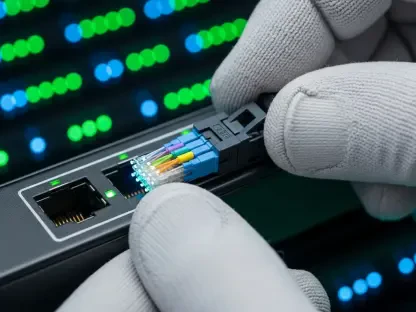In a striking incident, SK Telecom faced a severe data breach in April, affecting approximately 23 million customers—nearly half of South Korea’s population. This breach, considered one of the most significant in the company’s history, has posed critical challenges for SK Telecom in retaining its customer base and securing customer data. As the situation unfolds, SK Telecom finds itself in a complex scenario that threatens its economic standings and its ability to regain trust among consumers. This exploration dives deep into the company’s rapid responses, ongoing investigations, and the potential long-term impacts on its operations and the broader telecommunications landscape.
The Breach Overview
Unprecedented Security Incident
The breadth and depth of SK Telecom’s data breach have prompted serious concerns due to the sensitivity of the information exposed. The unauthorized access meant that approximately 25 different types of vital personal data, including mobile phone numbers, IMSI numbers, USIM authentication keys, and other USIM-related information, were compromised. Such a breach heightens the risk of sophisticated cyber threats like SIM swapping attacks, which could lead to illicit surveillance and unauthorized access to private communications. For customers, the implications are dire, placing personal privacy and data security into question. Furthermore, this breach highlights the vulnerabilities inherent in digital networks, especially when relying heavily on centralized data systems that, once compromised, can lead to extensive damage and distrust among users.
Initial Detection and Response
The breach detection phase began on April 18 when SK Telecom’s monitoring systems flagged abnormal activities, specifically logging irregularities and deletions tied to billing information. Swift in their response, SK Telecom recognized the breach on April 19 in their home subscriber server located in Seoul. The company reported these incidents promptly to Korea’s cybersecurity agency by April 20, ensuring transparency and immediate action. Public acknowledgment of the breach followed soon after, marking April 22 as the date SK Telecom voiced its recognition of the severity and potential scale of the incident. This rapid identification and communication process underscores SK Telecom’s commitment to addressing cybersecurity flaws proactively, though it also reveals the gravity and sophistication of such threats, demanding robust and resilient systems to detect and mitigate potential breaches swiftly.
Customer Impact and Company Actions
Immediate Remedial Measures
In a bid to protect affected customers and prevent further vulnerabilities, SK Telecom implemented several immediate remedial actions to contain the fallout from the breach. One of the primary steps was offering SIM card replacements free of charge to ensure customers were safeguarded against potential SIM-related attacks. This SIM card protection initiative aimed to fortify security and provide peace of mind to customers. However, SK Telecom faced logistical challenges such as the shortage of USIM cards required for these replacements, highlighting the practical difficulties in fulfilling its promises amidst supply constraints. Furthermore, in light of emerging threats, SK Telecom accelerated efforts to develop a SIM protection service by mid-May, focusing on safeguarding customer information while enabling seamless roaming services internationally.
Broader Customer Reactions
This breach has had profound implications on SK Telecom’s customer base. Reports gathered during a National Assembly hearing in Seoul revealed that approximately 250,000 customers had already switched to competing telecom providers, seeking more secure and reliable services. The report further speculated that this figure could potentially escalate to 2.5 million if SK Telecom decides not to impose cancellation fees on affected customers. The financial impact of such customer attrition is alarming—company projections suggest a possible loss of up to $5 billion over the next couple of years if the fees are waived. Such economic ramifications emphasize the gravity of trust erosion post-breach, pushing SK Telecom to reassess and reinforce its customer service strategies, focusing on robust security measures and transparent communication to regain customer trust and stabilize its consumer base.
Investigation and Accountability
Search for the Breach Culprits
The search for the breach perpetrators has ignited collaborative investigations spearheaded by public and private entities, aiming to pinpoint those responsible and ascertain the origin of the security compromise. Insights from the Personal Information Protection Committee (PIPC) have been instrumental in analyzing the characteristics and scope of the exfiltrated data. Meanwhile, South Korean police have been actively probing into the incident, with speculations from local media suggesting potential involvement of China-backed hacker groups. These groups reportedly exploited vulnerabilities within Ivanti VPN systems—a hypothesis supported by cybersecurity experts at TeamT5 who stress the global security threat such a hacker outfit poses across various industries. This ongoing investigation highlights the need for international collaboration in cybersecurity discourse, underscoring the interconnected nature of technological systems and the importance of comprehensive and cohesive security policies to prevent breaches of this magnitude.
Continuing Developments
In the wake of initial investigations, recent developments have unveiled additional strains of malware linked to SK Telecom’s data breach, inviting further scrutiny into potential origins and installation vectors. These findings advance concerns surrounding the extent and impact of the hacking, urging continuous monitoring and adaptive security strategies. Publicly responding to these developments, SK Group’s chairman, Tae-won Chey, issued an apology three weeks post-breach, signaling accountability and acknowledgment of the security lapses. Concurrently, SK Telecom has sought to prevent secondary damages, assuring customers of strengthened fraud detection mechanisms designed to block unauthorized logins facilitated by cloned SIM cards. These measures aim to solidify the company’s commitment to data integrity and security, reflecting a robust stance against future threats, though challenges remain in dispelling fears and restoring trust among the affected demographic.
Future Implications for Cybersecurity
Lessons for SK Telecom and Beyond
The SK Telecom breach serves as a compelling lesson for both the company and the broader telecommunications industry, highlighting the indispensable need for strong cybersecurity protocols and agile responses. SK Telecom’s swift detection and public disclosure demonstrate effective communication with stakeholders, though the scale of the breach underscores potential vulnerabilities inherent in centralized data storage systems. This incident urges telecom firms to adopt strategic and sustainable cybersecurity measures, proactively identifying risks and implementing layered defenses to mitigate such threats. Additionally, it calls for a nuanced approach to economic recovery, considering both immediate loss of customers and long-term reputational risks. Regaining trust among consumers necessitates careful policy adjustments, emphasizing transparency, collaborative communication, and innovative solutions tailored to cyber threats that evolve in complexity and cunning.
Collaborative Efforts and Future Trends
In April, SK Telecom faced an alarming data breach affecting about 23 million people, which is roughly half of South Korea’s population. This security breach stands as one of the largest in the firm’s history, bringing significant challenges to its ability to maintain its customer base and ensure the security of personal data. As the situation continues to develop, SK Telecom is caught in a complicated predicament that not only jeopardizes its economic position but also its efforts to rebuild consumer trust. Addressing the severity of the breach, the company has been quick in its response, initiating thorough investigations to understand the breach’s origins and implications. These efforts are pivotal in mitigating the long-term impacts on its operations and reputation. This breach has sparked discussions on enhancing cybersecurity measures across the telecommunications industry. The event serves as a wake-up call for the necessity of more robust data protection strategies to safeguard consumer information in the digital era.









